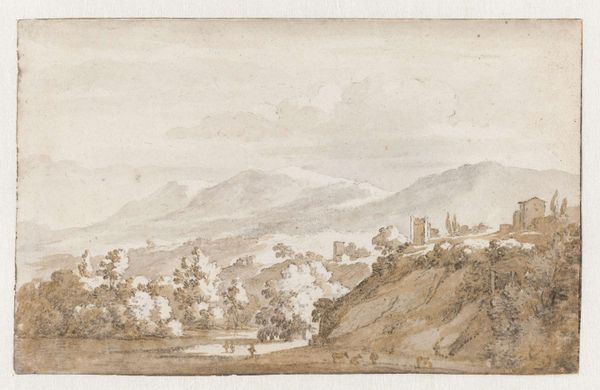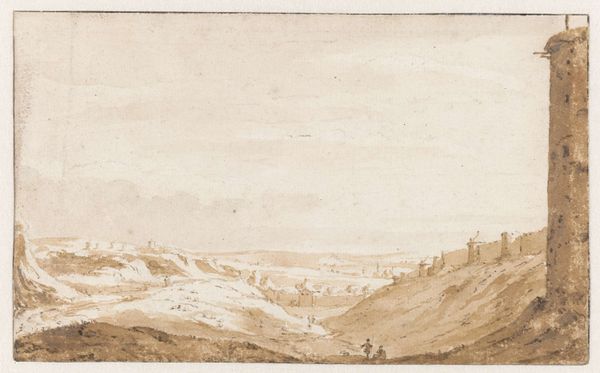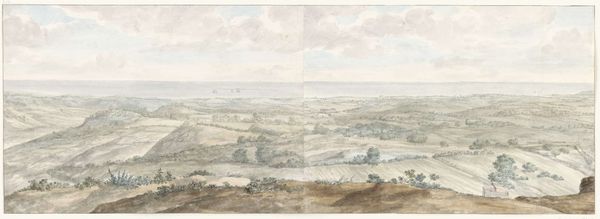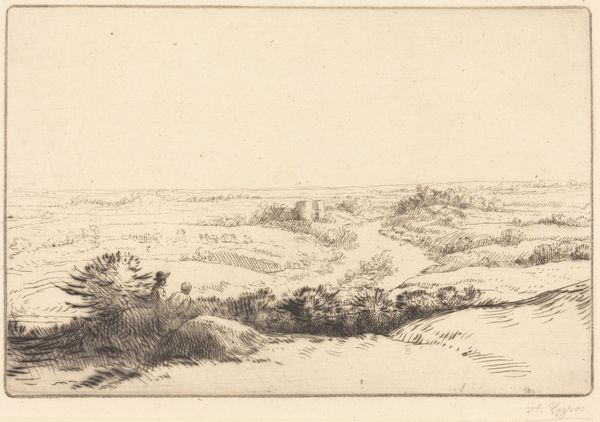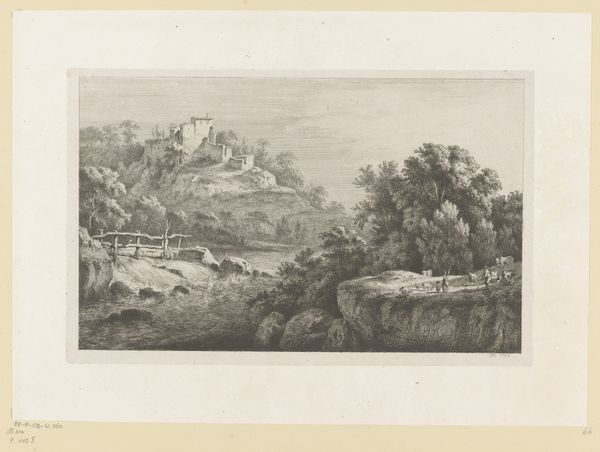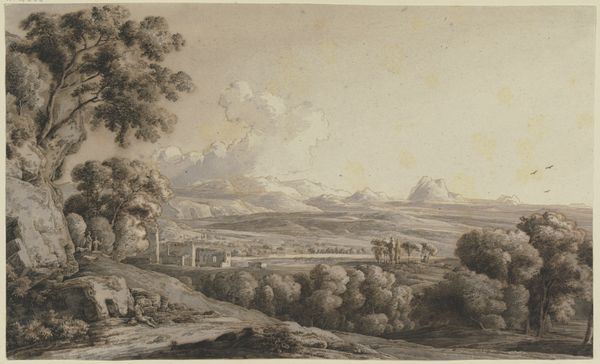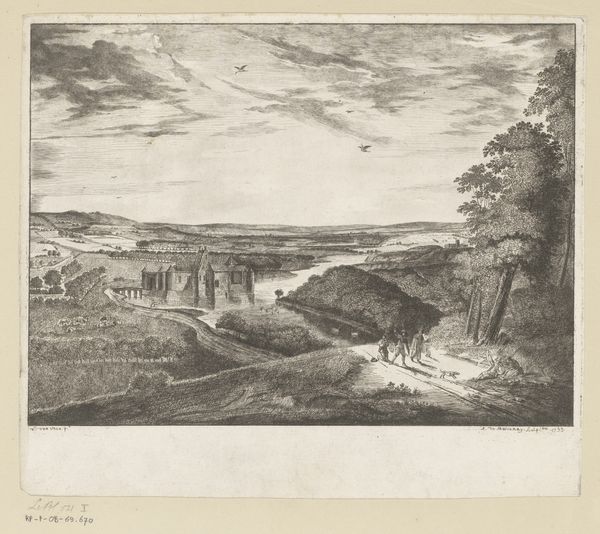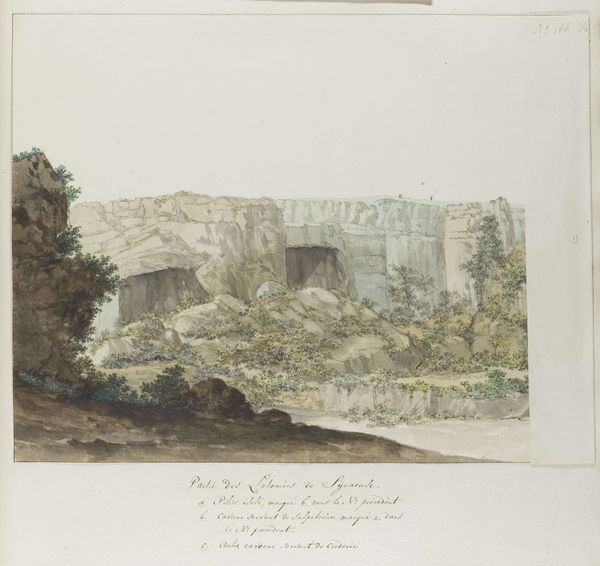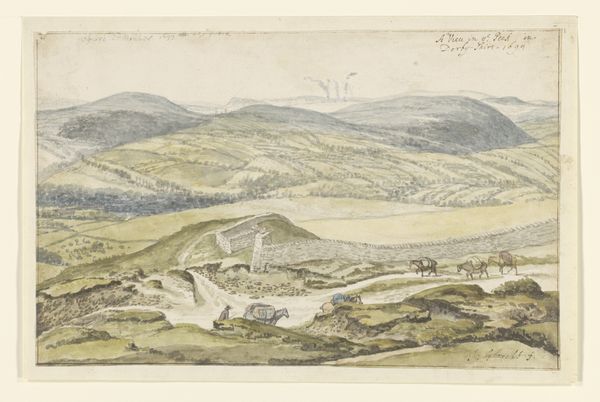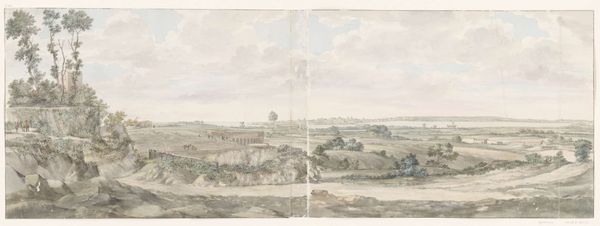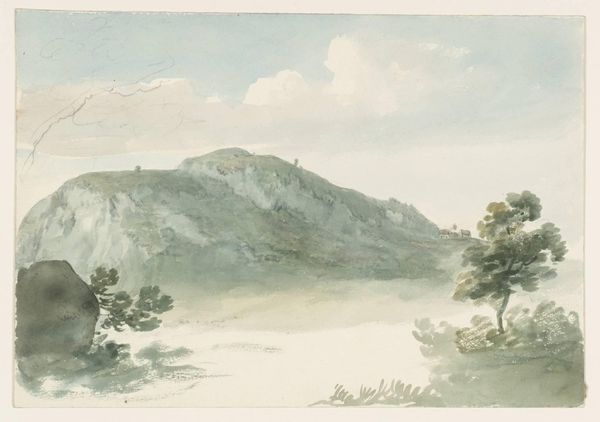
Gedeelte van Latomies grotten bij Syracuse welke vroeger dienden als gevangenis 1778
0:00
0:00
Dimensions: height 229 mm, width 1135 mm
Copyright: Rijks Museum: Open Domain
Curator: This delicate pencil drawing, currently housed in the Rijksmuseum, captures a sweeping vista by Louis Ducros. Titled "Gedeelte van Latomies grotten bij Syracuse welke vroeger dienden als gevangenis," it was created in 1778 and provides a glimpse into the ancient quarries of Syracuse, once utilized as prisons. Editor: It’s… bleak. But there’s a beauty in the sheer, raw physicality of the rock face, how Ducros captures the gradations from light to shadow. I find myself pondering the laborious act of quarrying, of hewing this stone from the earth, especially considering the prisons these became. Curator: The social element here is key; these spaces are forever marked by suffering. Ducros, operating within both Neoclassical and Romantic traditions, would've likely been playing with the Sublime – that sense of awe mixed with terror evoked by nature’s immensity, intensified by historical and political connotations. Editor: I see that in the tension between the refined linework and the rough subject. Pencil as a medium allows for precision, but there's an inescapable mark-making involved. And considering it's a drawing – a direct record of observation – it forces us to contemplate the hand that shaped this representation. The act of creating this drawing, it acknowledges labor at several points in time, literally. Curator: It's also important to remember the cultural climate of the time; archaeological interests were on the rise. Sites like this represented a direct link to classical antiquity, reinforcing the authority of the past upon contemporary society. To encounter this place in person would bring the history to life. Ducros is facilitating access through this artwork, offering a tangible version of historical experience. Editor: Right, but look at that almost unnervingly straight aqueduct cutting through it all. The juxtaposition, whether intentional or not, between natural erosion and structured human design gets me thinking about the many types of making and extraction at work in this scene. Curator: Absolutely. Ducros creates more than just a picturesque view, this prompts us to remember this location as not just landscape, but also a repository of a harsh history—something more significant than mere scenery. Editor: And Ducros makes that layering visible through his mastery of the medium and careful composition of forms and structures that have endured for millennia. It all brings those processes, physical and social, sharply into view. Curator: Indeed, viewing the history and politics with such artistry enables viewers to better relate with those who once lived there. Editor: Exactly; in both Ducros' original execution and our analysis.
Comments
No comments
Be the first to comment and join the conversation on the ultimate creative platform.
